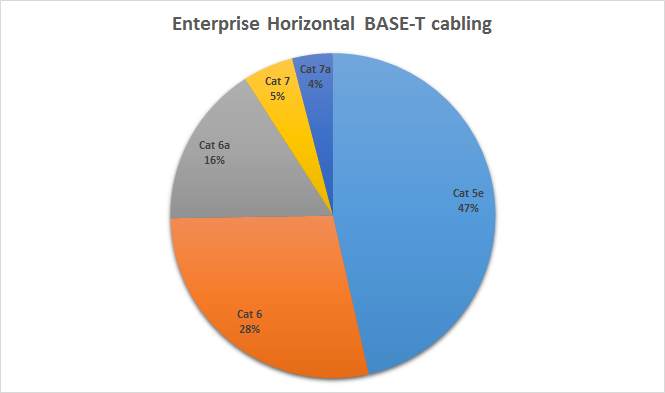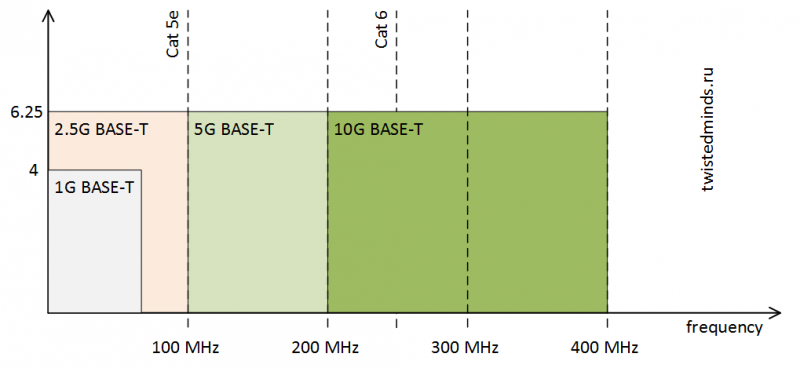Once we met gigabit mark there was no speed progress for end users desktops in enterprise environment. While Data Centers and Service Providers adopted 10G technology and beyond.
It’s caused by several factors:
- there is no point to go over gigabit since it’s already good enough to support such bandwidth-hungry applications as rich multimedia, let’s leave alone VoIP and Surveillance;
- there is no 10G PoE standard at this moment to power phones, access points and security cameras over an UTP cable remotely;
- wide adoption of cloud and web application ideology ensured that all data is being worked on distant servers without the need to transfer it back and forth;
- and last but not least – it’s quite costly to update your cable infrastructure to support 10G speed as it requires, at least, Cat6 UTP cable and still probably won’t meet desired range between workstation and closet.
| UTP Cable | 5e | 6 | 6a | 7 |
| IEEE 10G Spec | n/a | 55m | 100m | 100m |
And the last one is a huge issue since Cat5e and Cat6 cabling dominates install base:

according to Cabling Installation & Maintenance Magazine, Cabling Market Outlook Consumption Trends and Analysis Enterprise and Data Center Organizations, February 2014
Probably one among a few useful scenarios to deploy 10G at access is traffic heavy video editing which is rare to meet. Apart from it, there is no much data transferred towards or between desktops thus even gigabit links stayed unsaturated. Until now.
The growing demand for mobility and the increasing number of Wi-Fi enabled devices require fast pipelines to ensure smooth user experience. 802.11ac standard appearance is a response to these demands.
While using 802.11ac Wave I access point with Gigabit uplink shouldn’t be a concern (written in Russian, use your fav. translator) upcoming release of 802.11ac Wave II access points and adoption of 802.11ad standard would definitely bring a bottleneck issue to the table.
Here comes the savior – NBase-T.
What is NBase-T anyway?
NBase-T is a technology which allows pushing 2.5 Gbps and 5 Gbps through old fashioned Cat5e and Cat6 copper line while supporting all PoE standards up to 60W. NBase-T leverage 10GBASE-T PHY technology. NBase-T is splitting it in fourth and by changing modulation allow to pump more speed through the pipe.

| Standard | Transfer speed | Coding Scheme | Pairs Utilized | Nyquist Bandwidth |
| 10BASE-T | 10 Mbit/s | Manchester | 2 | 10 Mhz |
| 100BASE-TX | 100 Mbit/s | MLT-3 | 2 | 62.5 Mhz |
| 1000BASE-T | 1000 Mbit/s | 4D-PAM-5 | 4 | 62.5 Mhz |
| 2.5GBASE-T | 2500 Mbit/s | 2D-PAM 16 | 4 | 100 Mhz |
| 5GBASE-T | 5000 Mbit/s | 2D-PAM 16 | 4 | 200 Mhz |
| 10GBASE-T | 10000 Mbit/s | 2D-PAM 16 | 4 | 400 Mhz |
Altogether it allows to evolve beyond 1G limitation over Cat5/5e cable without need to perform costly infrastructure update or pull second cable to support growing wireless speeds.
NBase-T is being supported and promoted by NBase-T alliance.